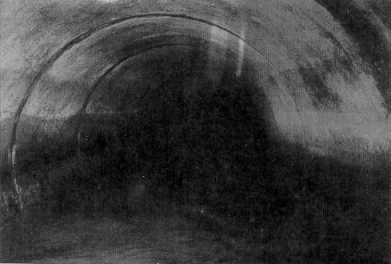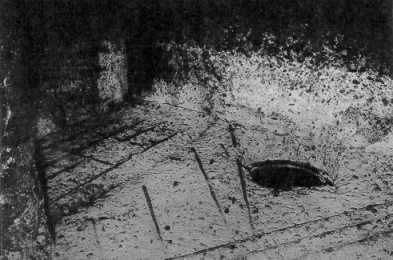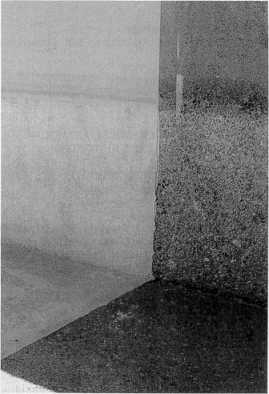
Acid Attack - Diagnosis
The principal indication of acid attack whether caused by a bacterial environment or the presence of aggressive CO2 is low pH. A pH level at or below 9 is indicative of acid attack and can be identified with a simple litmus test of the concrete surface. A low pH, however, may also be caused by other deterioration mechanisms and may often require additional testing to determine the deterioration mechanism accurately.
A. Bacterial Environment
The presence of H2S is the most reliable indication of bacterial acid attack. The presence of H2S may be confirmed through a simple "sniff" test or through nondestructive sampling of concrete surface constituents. A more thorough laboratory analysis of the surface film may be useful in determining the bacterial genus present. Some of the common physical effects on concrete due to acid attack are shown below. (ACI 210.1R-94, 1996)

Figure 1 (Typical new and undeteriorated condition of concrete pipe)

Figure 2 (Concrete deterioration of sewer pipe)

Figure 3 (Deterioration of reinforced concrete structure)

Figure 4 (Deterioration of reinforced concrete sedimentation tank)
B. Carbonic Acid (aggressive CO2 environment)
The physical effects of carbonic acid attack are not as pronounced as bacterial acid attack and thus more difficult to confirm without chemical analysis. As seen in the photograph below, (ACI 210.1R-94, 1996)carbon acid attack may resemble the effects of hydraulic abrasion. Diagnosis of carbonic acid attack is best accomplish by identifying the H2CO3 to Ca(HCO3)2 ratio contained in the water in contact with the cement. The chemical analysis of this water sample will provide the data necessary to make this determination.

Figure 5. Deterioration of fish hatchery tank caused by Carbonic acid